
Collection
Peptides from Animal Venom and Poisons
- Submission status
- Open
- Open for submission from
- 01 November 2021
- Submission deadline
- Ongoing
History is full of examples of drug development based on plant and animal biodiversity. A fundamental characteristic of animal venoms is the production of rich toxic secretions where the entirety of its composition is rich in materials, both in quantity and variety, in proteins (with or without enzymatic activity) and peptides. Peptides derived from animal venoms are important tools for carrying out biochemical, physiological and pathological studies, as well as for the development of new biotechnological and pharmaceutical products. The advance of new technologies has allowed researchers to identify and characterize, both functionally and structurally, hundreds of peptides (toxic or not) present in the venoms of snakes, scorpions, spiders, anurans, marine invertebrates, lizards, leeches and other animals, which have a great diversity of pharmacological activities. This paradox is very interesting: toxins present in animal venoms that can kill, are also used to produce medicines that save millions of lives.
We are currently seeking submissions for our new Special Issue on Peptides from Animal Venoms. For this Special Issue, the journal invites substantial contributions in the following thematic areas (including but not limited to):
- Studies on novel peptides isolated from animal venoms
- Application of new therapeutic strategies using peptides in specific diseases
- Synthetic peptides based on animal venoms to develop new drug prototypes
- Antibody reactive peptides for vaccine development
- Peptides used in the study of enzymatic specificity and its mechanism of action, both toxic and therapeutic
- The use of synthetic peptides to generate vaccine strategies
- Synthetic peptides with antigenic specificity for microorganism toxins
- Studies on antimicrobial peptides
- Molecular modeling studies on peptides with pharmacological potential
- Drug discovery inspired on snake venom toxins
- Structure- function relationships of peptides from animal
We welcome submissions of original articles, reviews, mini-reviews, or brief communications on this topic.
Your article must fall within the scope of this special issue and will be subject to peer review in accordance with journal policy. Please feel free to suggest in your cover letter some reviewers who are knowledgeable in the appropriate area.
Editors
-
Saulo Luís da Silva, PhD, University of Porto, Portugal
saulo.silva@fc.up.pt Professor affiliated to the Chemistry and Biochemistry Department of the Faculty of Sciences of the University of Porto. Degree in Fundamental Chemistry, University of São Paulo (USP). PhD in Biochemistry, University of Campinas (UNICAMP). Experience in Biochemistry, Protein Chemistry, Structural Biochemistry, Medicinal Chemistry. Supervised or co-supervised more than 38 students, with more than 80 articles published, H = 27 index, and 2000 citations.
-
Andreimar Martins Soares, PhD, Fiocruz Rondônia, Brazil
andreimar.soares@fiocruz.br Specialist (Full Researcher) at Sc&Tech Prod. Innov., in the area of Biotechnology applied to Health of the Oswaldo Cruz Foundation (FIOCRUZ) in Fiocruz Rondônia. Experience in biochemistry, biotechnology, toxicology and public policies in science and technology. Guided and/or supervised more than 90 students/professionals, with more than 270 articles published, H = 46 index, and more than 7,500 citations.
-
Ana Novo de Oliveira, PhD, University of Porto, Portugal
Ana Novo de Oliveira received her Ph.D. in Pharmacy from the University of Barcelona, Spain, in 2013. She then pursued her postdoctoral studies at the University of Uppsala, Sweden. Since 2018, she has been a researcher at the LAQV-REQUIMTE center and at the University of Porto. Her main research focus is the study of biomolecular systems using a variety of theoretical and computational methods. She is particularly interested in developing new therapeutic strategies for the treatment of pathological diseases, the discovery of new drugs, and understanding the structure-dynamics-function relationship in proteins.
Articles (70 in this collection)
-

-
Fish Protein Hydrolysate Research Trends over the Last 5 Years and Future Research Predictions; a Bibliometric Analysis
Authors (first, second and last of 5)
- Islamuddin Jafar
- Muhammad Asfar
- Muhammad Iqbal
- Content type: ReviewPaper
- Published: 02 May 2024
- Article: 34

-
JZTX-V, a Sodium Channel Inhibitor, Exhibits Excellent Analgesic Effects in Mouse Models
Authors
- Chen Bo
- Sun Zhenghua
- Zeng Xiongzhi
- Content type: OriginalPaper
- Published: 08 April 2024
- Article: 25

-
Design and Characterization of Anticancer Peptides Derived from Snake Venom Metalloproteinase Library
Authors (first, second and last of 4)
- S. Saranya
- M. Bharathi
- P Chellapandi
- Content type: OriginalPaper
- Published: 27 March 2024
- Article: 24

-
Investigating the Effects of Melittin-Loaded Pectin as Novel Anti Breast Cancer Drug to Increase the Apoptosis Rate
Authors (first, second and last of 5)
- Esmaeil Alibeigi
- Arsham Azari Dehkordi
- Tohid Piri-Gharaghie
- Content type: OriginalPaper
- Published: 28 February 2024
- Article: 17
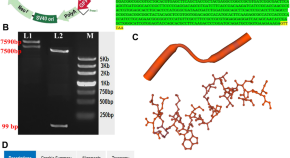
-
Diving into the Venom Apparatus Transcriptomes of Pterois antennata and Pterois radiata: Unearthing a Novel Genus-Specific Piscidin-3 Homolog and a Multifarious Repertoire of Antimicrobial Peptides
Authors (first, second and last of 9)
- Parthkumar Prajapati
- Riya Desai
- Chandrashekar Mootapally
- Content type: OriginalPaper
- Published: 07 February 2024
- Article: 12
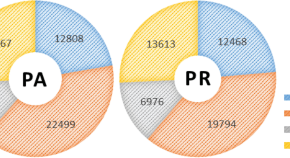
-
Investigating the Characteristics of Nanoliposomes Carrying Bioactive Peptides Obtained from Shrimp Waste
Authors
- Shima Khalatbari
- Maryam Hasani
- Morteza Khoshvaght-Aliabadi
- Content type: OriginalPaper
- Published: 24 January 2024
- Article: 10
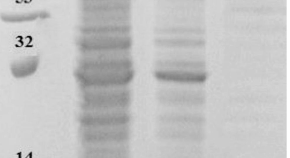
-
Cytotoxic Activity of A New Isoform l-Amino Acid Oxidase (Balt-LAAO-II) From Bothrops alternatus (Urutu) Snake Venom in Human Leukemic HL60 Cells
Authors (first, second and last of 8)
- Mauricio Aurelio Gomes Heleno
- Alexandre Nowill
- Luis Alberto Ponce-Soto
- Content type: OriginalPaper
- Published: 22 November 2023
- Article: 1
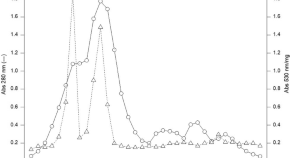
-
Investigating the Effects of Temporin-Rb, an Antimicrobial Peptide, on Cell Viability and Pro-inflammatory Gene Expression in A549 Cells
Authors (first, second and last of 4)
- Niloufar Shakibapour
- Ahmad Asoodeh
- Jamshidkhan Chamani
- Content type: OriginalPaper
- Published: 09 November 2023
- Article: 103

-
Evaluation of Antimicrobial Property of Bacteriocin Capped Silver Nanoparticles Prepared from Cell Free Supernatant of Lactobacillus brevis Isolated from Marine Fishes
Authors (first, second and last of 4)
- Tamil Selvi Alagumuthu
- Sugapriya Samidurai
- Kanagaraj James
- Content type: OriginalPaper
- Published: 28 September 2023
- Article: 95

-
Analysis of the Glycoprotein Properties and Glycan Structures of Chicken Angiotensin Converting Enzyme 2
Authors (first, second and last of 5)
- Xiaoxia Ji
- Chang Ma
- Yuanshu Zhang
- Content type: OriginalPaper
- Published: 22 September 2023
- Article: 92

-
The Therapeutic Anticancer Potential of Marine-Derived Bioactive Peptides: A Highlight on Pardaxin
Authors
- Yong Hui Wong
- Sharon Rachel Wong
- Sau Har Lee
- Content type: ReviewPaper
- Published: 31 August 2023
- Article: 90
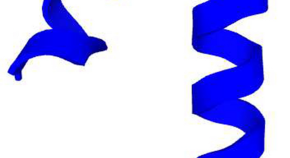
-
Purification and Identification of Bioactive Oligopeptide from Indian Halibut (Psettodes erumei) Muscle Tissue and Its Inflammation Suppressing Effect In Vitro
Authors (first, second and last of 7)
- Akshad Balde
- Anushka Chatterjee
- Rasool Abdul Nazeer
- Content type: OriginalPaper
- Published: 22 July 2023
- Article: 80

-
Why to Study Peptides from Venomous and Poisonous Animals?
Authors
- Ana Novo de Oliveira
- Andreimar Martins Soares
- Saulo Luís Da Silva
- Content type: ReviewPaper
- Open Access
- Published: 14 July 2023
- Article: 76
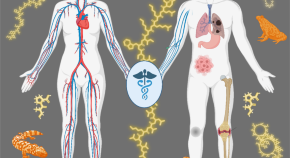
-
Elucidation of the Mechanisms of Human cathelicidin-derived Antimicrobial Peptides (LL-37 and its Truncated LL-31) Against Burkholderia Pseudomallei
Authors (first, second and last of 6)
- Onanong Phophetleb
- Wonn Shweyi Thet Tun
- Rina Patramanon
- Content type: OriginalPaper
- Published: 22 June 2023
- Article: 69

-
Anticancer Potential and Cytotoxic Activity of NN-32, a Snake Venom Peptide, Against A549, Lung Cancer Cell Line
Authors
- Pratibha Kurkute
- Amol Jadhav
- Sangeeta V. Pandit
- Content type: OriginalPaper
- Published: 08 June 2023
- Article: 67

-
Isolation and Purification of an Oligopeptide from Periplaneta americana and Its Mechanism of Promoted Wound Healing
Authors (first, second and last of 7)
- Yali Liu
- Xueting Dai
- Qin Song
- Content type: OriginalPaper
- Published: 02 June 2023
- Article: 65

-
Deferoxamine has the Potential to Improve the COVID-19-Related Inflammatory Response in Diabetic Patients
Authors (first, second and last of 4)
- Motahareh Zeinivand
- Masoomeh Sharifi
- Seyed Ershad Nedaei
- Content type: ReviewPaper
- Published: 30 May 2023
- Article: 63
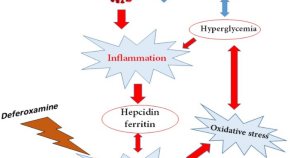
-
Investigating the Antibacterial Effects of 3 Novel Peptides Isolated from the Venom of Iranian Odontobuthus doriae and Buthotus saulcyi Scorpions on Escherichia coli (UTI89) and Enterococcus faecalis Causing Urinary Tract Infection
Authors
- Ehsan Jahangirian
- Jamil Zargan
- Content type: OriginalPaper
- Published: 18 May 2023
- Article: 55
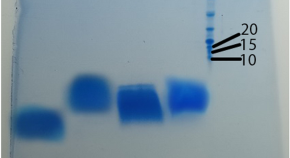
-
Biochemical and Biological Characterization of Type-I Collagen from Scomberomorus commerson Skin as a Biomaterial for Medical Applications
Authors (first, second and last of 11)
- Soheila Naderi Gharahgheshlagh
- Noorahmad Latifi
- Fatemeh Latifi
- Content type: OriginalPaper
- Published: 18 May 2023
- Article: 56
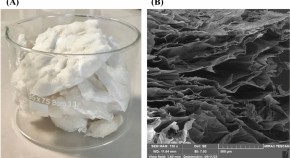
-
cDNA Cloning, Heterologous Expression, Cytotoxicity, and Inhibitory Effects of a Disintegrin from Bothrops ammodytoides Venom
Authors (first, second and last of 5)
- Herlinda Clement
- Ligia Luz Corrales-García
- Gerardo Corzo
- Content type: OriginalPaper
- Open Access
- Published: 16 May 2023
- Article: 54

-
Effects of C-Terminal-Ethyl-Esterification in a Snake-Venom-Based Peptide Against the Neurotoxicity of Acrolein in PC12 Cells
Authors (first, second and last of 10)
- Carolina P. Bernardes
- Neife A. G. Santos
- Antonio C. Santos
- Content type: OriginalPaper
- Published: 03 April 2023
- Article: 41

-
Fish Epidermal Mucus as a Source of Diverse Therapeutical Compounds
Authors
- Ahmed Hussain
- Shashwati Ghosh Sachan
- Content type: ReviewPaper
- Published: 20 March 2023
- Article: 36

-
Upregulation of GLUT4 Expression and Glucose Homeostasis by Synthetic Peptides HL-7 and HL-10 in in-vitro and in-vivo Diabetic Models
Authors (first, second and last of 4)
- Zahra Setayesh-Mehr
- Leila Vafadar Ghasemi
- Reza Momeni
- Content type: OriginalPaper
- Published: 16 March 2023
- Article: 35
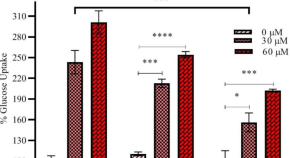
-
Mini-αA-Crystallin Stifled Melittin-Induced Haemolysis and Lymphocyte Lysis
Authors (first, second and last of 6)
- Tenzin Tender
- Rakesh Ravishankar Rahangdale
- Raghu Chandrashekar Hariharapura
- Content type: OriginalPaper
- Open Access
- Published: 01 March 2023
- Article: 31

-
Scorpion Venom Peptide Smp24 Revealed Apoptotic and Antiangiogenic Activities in Solid-Ehrlich Carcinoma Bearing Mice
Authors (first, second and last of 6)
- Bishoy S. Fawzy
- Mohamed S. Nafie
- Mohamed A. Abdel-Rahman
- Content type: OriginalPaper
- Open Access
- Published: 20 February 2023
- Article: 29
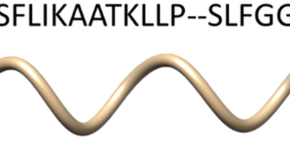
-
Design and Synthesis of Peptides from Phoneutria nigriventer δ-Ctenitoxin-Pn2a for Antivenom Production
Authors (first, second and last of 9)
- Jésica A. Rodríguez
- Gabriela R. Barredo-Vacchelli
- Silvia A. Camperi
- Content type: OriginalPaper
- Published: 18 February 2023
- Article: 25

-
Batroxin I: A Novel Bradykinin-Potentiating Peptide with Cytotoxic Activity Isolated from Bothrops atrox Snake Venom
Authors (first, second and last of 6)
- Adélia Cristina Oliveira Cintra
- Tássia Rafaella Costa
- Suely Vilela Sampaio
- Content type: OriginalPaper
- Published: 09 February 2023
- Article: 20

-
Ghrelin Inhibits ACL Derived Fibroblasts Pyroptosis and Promotes Migration Through Regulating NF-κB p65/NLRP3 Signaling
Authors (first, second and last of 5)
- Xu Zhu
- Juan Wu
- Yu-Cong Zou
- Content type: OriginalPaper
- Published: 06 February 2023
- Article: 19
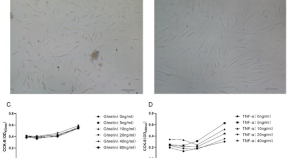
-
In Vitro Structure–Activity Relationship Study of a Novel Octapeptide Angiotensin-I Converting Enzyme (ACE) Inhibitor from the Freshwater Mussel Lamellidens marginalis
Authors (first, second and last of 8)
- Madhushrita Das
- Ankhi Halder
- Jana Chakrabarti
- Content type: OriginalPaper
- Published: 04 February 2023
- Article: 18

-
The Cytotoxic Effects of Partially Purified Cytotoxic Peptides of Naja naja Oxiana Venom on Human Glioblastoma Multiforme: An in vitro Study
Authors (first, second and last of 4)
- Niloufar Sinaei
- Abbas Zare Mirakabadi
- Somayyeh Karami-Mohajeri
- Content type: OriginalPaper
- Published: 20 December 2022
- Article: 14

-
Protective Role of Antibiotics (Anisomycin and Puromycin) Against Snake Venom Acetylcholinesterase (AChE)
Authors (first, second and last of 5)
- Mushtaq Ahmed
- Akhlaq Ahmad
- Rahmat Ali Khan
- Content type: OriginalPaper
- Published: 17 December 2022
- Article: 13

-
Cytotoxicity and Molecular Alterations Induced by Scorpion Venom Antimicrobial Peptide Smp43 in Breast Cancer Cell Lines MDA-MB-231 and MCF-7
Authors (first, second and last of 5)
- Wafaa K. Teleb
- Mohamed A. Tantawy
- Mohamed A. Abdel-Rahman
- Content type: OriginalPaper
- Published: 02 December 2022
- Article: 8

-
Biological Characterization of Natural Peptide BcI-1003 from Boana cordobae (anura): Role in Alzheimer’s Disease and Microbial Infections
Authors (first, second and last of 5)
- Roque Spinelli
- Ma. Verónica Humpola
- Alvaro Siano
- Content type: OriginalPaper
- Published: 29 November 2022
- Article: 6

-
Dual Bioactivity of Angiotensin Converting Enzyme Inhibition and Antioxidant Novel Tripeptides from Sipunculus nudus L. and Their Related Mechanism Analysis for Antihypertention
Authors (first, second and last of 7)
- Huan Liu
- Xiaoxuan Cai
- Yingnian Lu
- Content type: OriginalPaper
- Published: 23 November 2022
- Article: 3
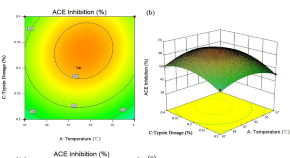
-
Venomics of the Scorpion Tityus ocelote (Scorpiones, Buthidae): Understanding Venom Evolution in the Subgenus Archaeotityus
Authors (first, second and last of 8)
- Cecilia Díaz
- Arturo Chang-Castillo
- Mahmood Sasa
- Content type: OriginalPaper
- Published: 23 November 2022
- Article: 2

-
New Synthesized Tri-Peptide as Inhibitor of Krait (Bungarus Sindanus) Venom Acetylcholinesterase
Authors (first, second and last of 4)
- Mushtaq Ahmed
- Nadia Mushtaq
- Ademir F. Morel
- Content type: OriginalPaper
- Published: 06 October 2022
- Article: 154

-
The Effect of Ghrelin on Apoptosis, Necroptosis and Autophagy Programmed Cell Death Pathways in the Hippocampal Neurons of Amyloid-β 1–42-Induced Rat Model of Alzheimer’s Disease
Authors (first, second and last of 9)
- Faezeh Naseri
- Majid Sirati-Sabet
- Fatemeh Goshadrou
- Content type: OriginalPaper
- Published: 06 September 2022
- Article: 151
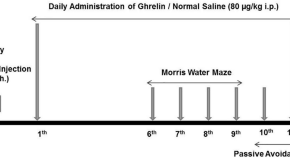
-
An Immunoinformatic Study on Exploration of Membrane Proteins to Develop Epitope Based Vaccine Against Streptococcus pneumoniae
Authors
- Aamir Khan
- Ajay Kumar
- Content type: Research
- Published: 13 August 2022
- Article: 142
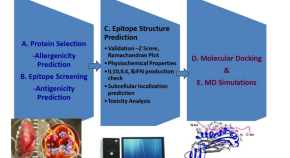
-
Production and Evaluation of a Novel Multi-Epitope Bivalent Vaccine Against Echinococcus multilocaularis Metacestode
Authors (first, second and last of 12)
- Runle Li
- Mingyuan Xin
- Feng Tang
- Content type: OriginalPaper
- Published: 06 June 2022
- Article: 114

-
The Effect of the Central Administration of the Neuropeptide VF on Feed Intake and Its Possible Interactions with Glutamate and Opioid Systems in Broiler Chicken
Authors (first, second and last of 4)
- Behnam Hamidi
- Morteza Zendehdel
- Ahmad Asghari
- Content type: OriginalPaper
- Published: 10 May 2022
- Article: 101
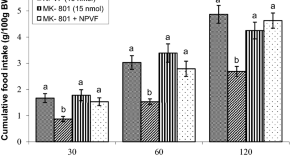
-
Anti-fungal Effects and Mechanisms of Action of Wasp Venom-Derived Peptide Mastoparan-VT1 Against Candida albicans
Authors (first, second and last of 4)
- Mojtaba Memariani
- Hamed Memariani
- Zohre Baseri
- Content type: OriginalPaper
- Published: 23 April 2022
- Article: 96

-
Antimicrobial, antioxidant and anti-cancer properties of protein hydrolysates from indian mackerel (Rastrelliger kanagurta) waste prepared using commercial enzyme
Authors
- Komail Hasani
- Peiman Ariaii
- Mohammad Ahmadi
- Content type: OriginalPaper
- Published: 02 April 2022
- Article: 86

-
Deciphering the Limitations and Antibacterial Mechanism of Cruzioseptins
Authors (first, second and last of 4)
- Fernando Valdivieso-Rivera
- Sebastián Bermúdez-Puga
- José R. Almeida
- Content type: OriginalPaper
- Published: 26 February 2022
- Article: 73

-
Effects of Molecular Weights -Assisted Enzymatic Hydrolysis on Antioxidant and Anticancer Activities of Liza abu Muscle Protein Hydrolysates
Authors
- Seyed Rasoul Shahosseini
- Seyed Rohollah Javadian
- Reza Safari
- Content type: OriginalPaper
- Published: 25 February 2022
- Article: 72

-
Phα1β is a Promising Neuroprotective Peptide from the Phoneutria nigriventer ‘Armed’ Spider
Authors (first, second and last of 4)
- Flavia Tasmin Techera Antunes
- Emanuelle Sistherenn Caminski
- Alessandra Hubner de Souza
- Content type: ReviewPaper
- Published: 24 February 2022
- Article: 70
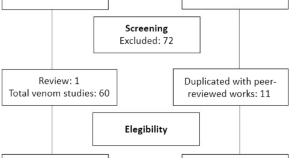
-
Wasp Venom Peptide (Polybia MP-1) Shows Antimicrobial Activity Against Multi Drug Resistant Bacteria Isolated from Mastitic Cow Milk
Authors (first, second and last of 9)
- Pallavi Shah
- Sameer Shrivastava
- Gyanendra Kumar Gaur
- Content type: OriginalPaper
- Published: 03 January 2022
- Article: 44
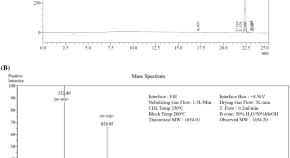
-
Antibacterial Effect of a Short Peptide, VV18, from Calcineurin-A of Macrobrachium rosenbergii: Antibiofilm Agent Against Escherichia coli and a Bacterial Membrane Disruptor in Pseudomonas aeruginosa
Authors (first, second and last of 9)
- Gayathri Ravichandran
- Purabi Sarkar
- Jesu Arockiaraj
- Content type: OriginalPaper
- Published: 08 December 2021
- Article: 22

-
Identification of Novel Nonapeptides from Sipunculus nudus L. and Comparing Its ACEI Activities Mechanism by Molecular Docking
Authors (first, second and last of 6)
- Yi Qi
- Xiaoning Tang
- Hui Luo
- Content type: OriginalPaper
- Published: 08 December 2021
- Article: 20

-
Protein Composition and Biomedical Potential of the Skin Secretion of Hylarana erythraea (Schlegel, 1837) (Anura: Ranidae) from Langkawi Archipelago, Kedah, Peninsular Malaysia
Authors
- Dasi Ong
- Mohd Nazri Ismail
- Shahriza Shahrudin
- Content type: OriginalPaper
- Published: 21 June 2021
- Pages: 2125 - 2133





